#comparative fairytales
Text
BD reviews: The good, the okay and the bad
Today's review: Et à la fin, ils meurent
After the bad, here is the good! A little BD I would definitively advise for anyone who wants to start in a fun way fairytale history or research ; or that would make a perfect gift to someone into fairytales - a BD I definitively recommend as a great product. "Et à la fin, ils meurent" (And they die in the end - subtitled "The dirty truth about fairy tales"), by Lou Lubie.
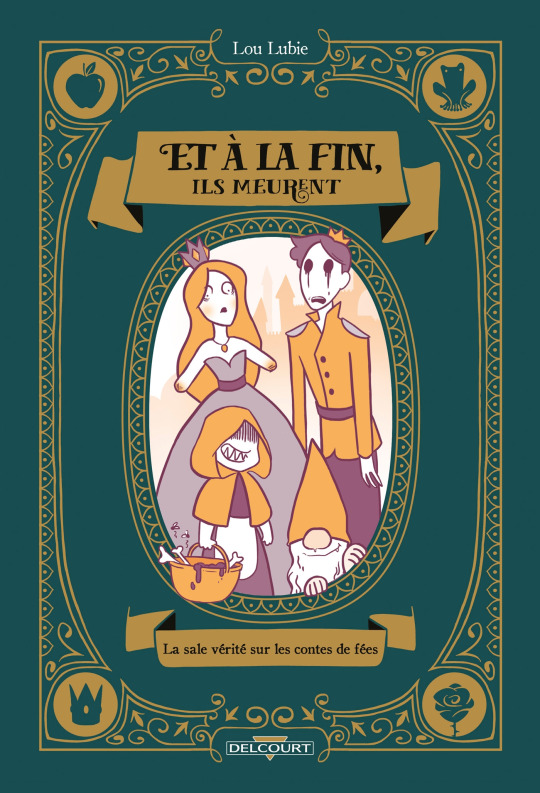
I had heard of this BD upon its release because it was everywhere on the news as one of THE trendy products to get. I only checked it out much later and as it turns out, people were right to hype it so much.
This book is a very funny and humoristic look at all the dark and grime of the "original" fairytales (and by original the author means the historical ones). Lou Lubie dispels and debunks all the cliches and stereotypes about fairytales by taking a comparative and explanative look not only at the original versions of famous stories as written by Grimm or Perrault, but also by taking a look at Basile's story, and going as far as some of the oldest fairytale versions known (the Chinese Cinderella, the Egyptian tale of The Two Brothers). The book is filled with jokes that land beautifully, in part thanks to the juxtaposition of the cartoonish violence and sexuality of the original texts with the cute-and-chibi style of Lou Lubie, this is a truly hilarious read.
But being the interest of this book as fun read - it is also a very informative and complete work, as Lou Lubie clearly studied her fairytale history and knows what she is talking about. She doesn't just compare the "big four" as she qualifies them (Basile, Perrault, the Grimm brothers and Walt Disney), but she also extends a full chronology going as deep as Antiquity and the oral tales of old, and as recently as very fresh and new works (the Once Upon a Time series, the Disney's Maleficent movie, the Hansel and Gretel Witch Hunters one). She mocks everybody when it comes to the fairytale authors and writers - but in a fair way, as she clearly doesn't have a bias in the "folkloric/oral tale vs literary one", as she presents the good and the bad of each variation. She also alternates chapters precisely centered around one specific fairytale (one about Cinderella, another about Bluebeard, a third about Rapunzel) with more general chapters evoking important questions - the structure of fairytales, the genders in fairytale, are fairytale racists, the reception of fairytales today... And she also evokes all sorts of topics that are usually not evoked in those "vulgarization" and "simplified" fairytale books - it is very pleasant to see a place given to the female fairytale authors, from madame d'Aulnoy to Boezna Nemcova. She even has an entire chapter around the fairytale of "The Sea Dog" and how it was rediscovered and hailed as a "true, censored gay traditional fairytale" by Peter Jordi Wood (I had talked about it on this blog before).
A great work... Which still has a big flaw though. Because nothing can be perfect, unfortunately, and the only problem of this book is that Lou Lubie clearly read Jack Zipes' works and as a result she bases her study of Perrault on the ground that he wrote for children, and that his stories were aimed at kids, and created in an educational intent... Which we know today to be a false myth spread by the 19th and 20th century, and which has been currently debunked - Perrault wrote for adults as part of a salon entertainment and literary game, he didn't intend his stories to be read by children. This notably results in some misunderstanding - such as Lou Lubie presenting "some of Perrault's morals as frankly immoral today" and evoking how Little Red Riding Hood is part of the "rape culture"... What is even more striking is that, while she commits this mistake, the author clearly avoids this when it came to the women writers of fairytales like madame d'Aulnoy or madame de Murat, as she clearly describes them as writing fairytale for adults with very subversive messages. She gets it right for them, but wrong for Perrault...
Hopefully beyond that the rest of the work is truly great and I can't recommend this book enough as a great, complete but simplified glimpse at what fairytales are really about.
Some of my favorite jokes would include the brothers Grimm trying not to murder in rage a Disney fan telling them the "real" story of Rapunzel, the Grimm and Perrault constantly bickering when trying to tell the story of Cinderella, Cinderella watering her mother's grave to prove to her stepmom that "You'll see if dresses don't grow on trees!" ; or the presentation of the logic of "the two previous siblings die at the hands of the villain, but the last one survives" (a la Fitcher's Bird) as being actually "video game logic" where brothers and sisters act as additional lives you can spend to understand how to solve the puzzle.
#fairytales#fairy tales#bd#fairytale comic#comic book#fairytale analysis#history of fairytales#comparative fairytales#funny#dark fairytales#bd reviews#bande dessinée
11 notes
·
View notes
Text
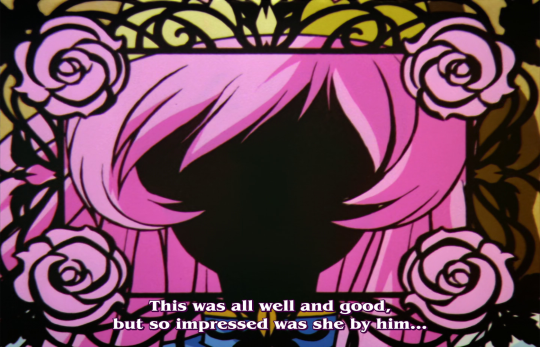
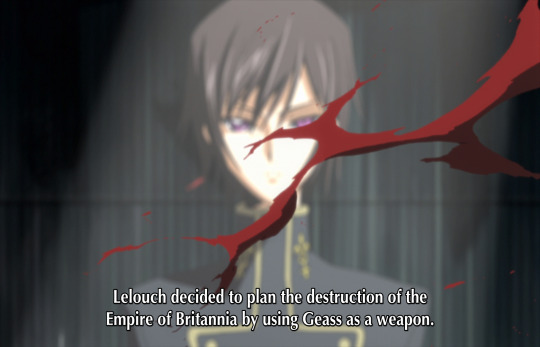
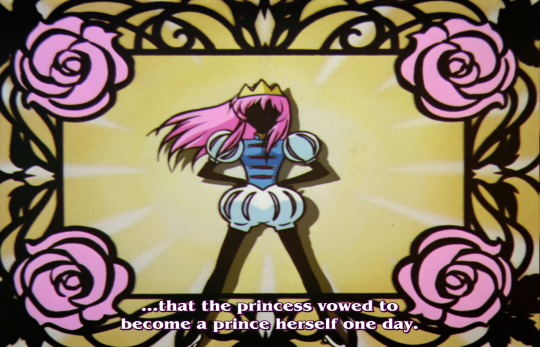

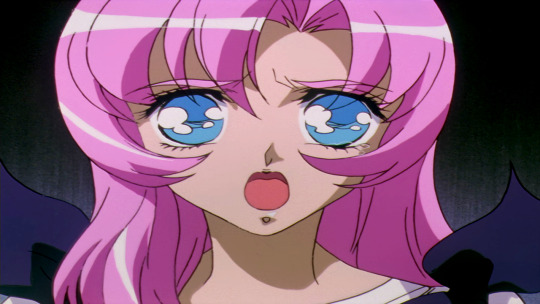
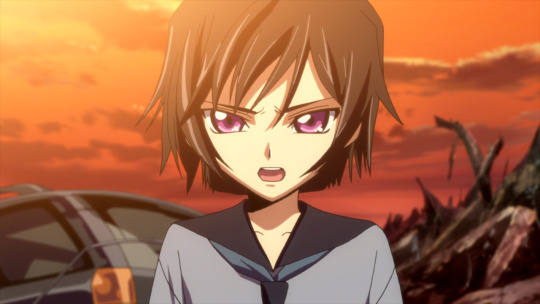
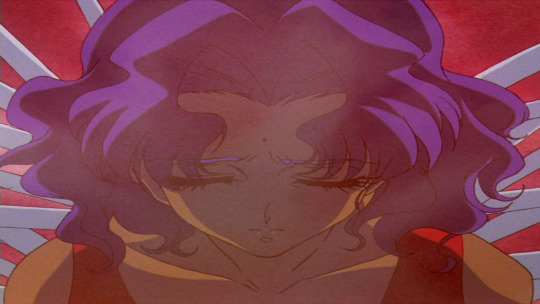





Then I’ll become a prince! I'll become her prince and save her! [...] I swear, I’ll become a prince! I swear!
REVOLUTIONARY GIRL UTENA
DUEL 34: THE ROSE SIGNET
I swear... Suzaku, I swear! I’m going to obliterate Britannia!
CODE GEASS: LELOUCH OF THE REBELLION
STAGE 1: THE DAY A NEW DEMON WAS BORN
#i've had this drafted since before i started this blog#suzalulu#code geass#revolutionary girl utena#comparatives#canon#lelouch of the rebellion#1x01#i grabbed the recap caps from i believe 1x04 but it's roughly the same on most s1 eps. which is the point obviously#i love how utena repeats the fairytale version (that erases anthy) at the start of every episode and we don't see the reality#until nearly the end of the series whereas cg OPENS with suzaku & lelouch but almost every episode starts with a recap positing nunnally#and avenging marianne as lelouch's sole motivations which is ofc what he also claims for most of the series#(''are you using nunnally as an excuse again'' ''you're right. i've fought to protect everything i wanted to protect'' 🤪)
257 notes
·
View notes
Text
@frazzledsoul shared an absolutely baffling take that she spotted on Instagram . Someone claimed "People are so distracted by Jess' looks that they overlook the fact he is a calculator (calculated?) person only at the age of 16 it's alarming and SICK that Jess knew how to manipulate Dean and Rory's relationship to make them feel uncomfortable with each other! Jess did this to make Dean feel insecure and paranoid so Rory got progressively more distant and Jess can take Rory away from him!"
Dean wasn't insecure and paranoid until Jess showed up? I smell a trash take! Lessgo!
I notice Dean's supporters who blame Jess for being a big ol Ruiner seem to gloss over Dean's jealousy over TRISTAN (who was nothing more than a bully and a harrasser that Rory wasn't dating or even interested in). If everything was so dang hunky dory for Dean and Rory (Lol, that rhymed) before Jess shows up, what is Dean's excuse for being insecure, paranoid, and making Rory uncomfortable for the entire first season of the show, another 5 episodes of season 2 until Jess shows up, then another some odd epsiodes into season 2 until Dean and Jess even just meet each other or are simply aware of each other's existence? The first time we truly see the rivalry between Dean and Jess start brewing on screen isn't until Bracebridge Dinner (2x10), and then it heats up for realsies in A Tisket a Tasket (2x13). So before 2x,10, who was using their psychic abilities on Dean to "make him" treat Rory like crap for 30 some odd episodes? He treated Tristan with the same jealous contempt as he did Jess, and I would argue it was even worse. in fact in Love, Daisies, and Troubadors, Tristan grabs Rory's books without her consent while Dean is in the Chilton parking lot. All he has to do is see Tristan with Rory's books (that she didn't want him to take and was trying to get back from him) and he doesn't ask Rory any questions. His temper is instantly set off and he becomes scarily jealous in the school parking lot and starts raising his voice at Rory in front of hundreds of other students.
Not to excuse Tristan for being a bully. Poor Rory is exhausted and she should probably just give up on boys, run away and join a nunnery. But we're talking about Dean The Butt Forrester here. Just seeing another boy carrying Rory's books was enough to set him off.
Just a very select few examples of Dean being insecure, paranoid jealous, and just a garden variety asshole, and Rory's "comfort" with him, long before Liz stuck Jess on that bus to hell:

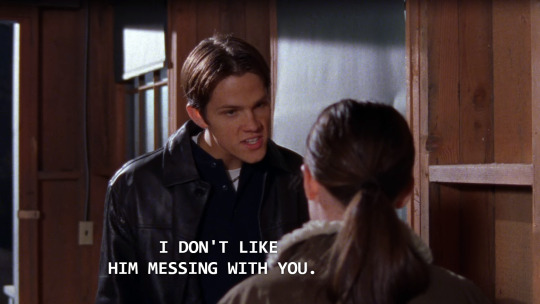

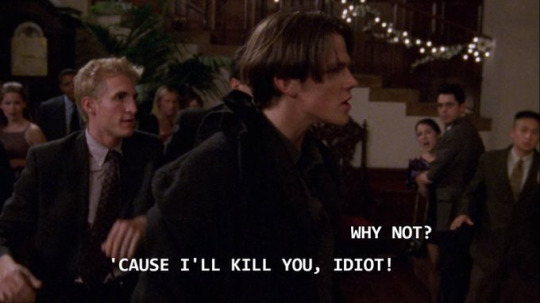


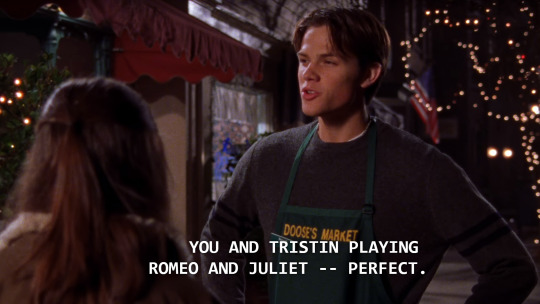
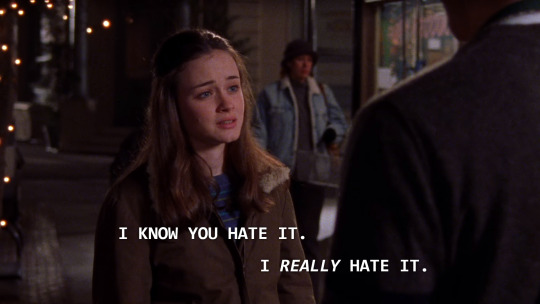


See, he's more than capable of being a butt clown all on his own! Sorry Dean Lovers, ya'll get five seasons worth of your lover boy and we only get 1 and a half of Jess. You can't use Jess as a "get out of jail free card" for every shitty thing Dean does.
#anti dean forrester#bad takes#people making stuff up that never happened#Jess is a 16 year old calculator#jess mariano#gilmore girls#Dean is frightening#tristan shit#this trash take also assumes Rory didn't make several deliberate decisions on her own that Jess never asked her to do#like the decision to skip school and board a bus to see Jess in another state#or kiss him behind Dean's back#Jess the 16 year old calculator just manipulated her into doing those things lol#did Dean not dump Rory in season 1 leaving her crying into a beach pail of ice cream#okay bad example compared to Jess breaking Rory’s heart also#but my point is Rory and Dean weren’t some small town fairytale before Jess rode in
78 notes
·
View notes
Text
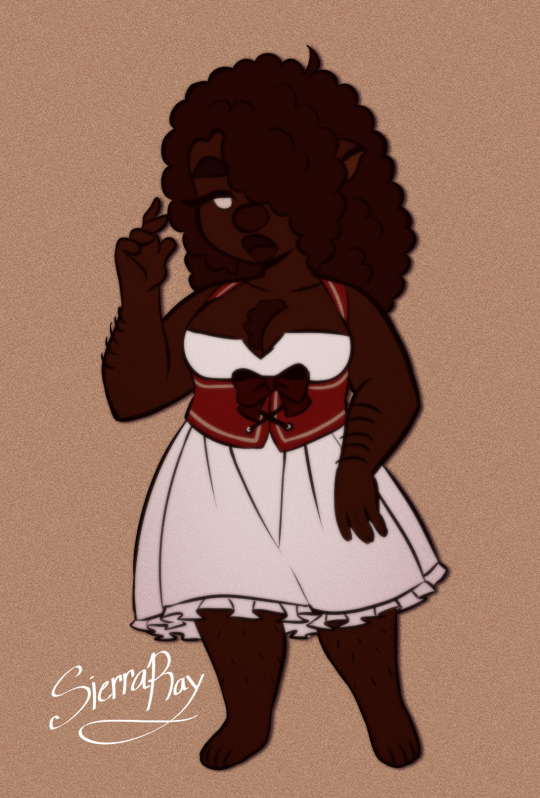
Tried to draw a Hanna-Barbera styled Nana as a warm up because the 70s style of cartoons is very charming to me.
#nana#my art#beanstalked#errbody wants toe make retro anime screencaps and i...also wanna make retro anime screencaps#but also retro cartoon screencaps#i do wanna try drawing jack and nana in old 70s or 80s anime style like that one grimms fairytale anime#i feel like that's a retro anime style that'd fit beanstalked characters the most compared to the typical go to one
61 notes
·
View notes
Photo



Rosaline (2022)
#Rosaline#Rosaline 2022#Rosaline Hulu#Romeo and Juliet#Kaitlyn Dever#Kyle Allen#Sean Teale#Isabela Merced#period drama#perioddramaedit#periodedits#my gifs#one disappointment after another#first Birdie then this X_X#(and many more before them - it's just that these two premiered this month)#even taken as the simplest modern oops-forgot-the-magic fairytales#with no pretence to have a single decent joke#such films are so shallow it's unbearable#...so now I'll go rewatch Upstart Crow 1x01 for the hundredth time#because comparing to this nonsense UC is an utter masterpiece with profoundest irony#and UC take on Romeo and Rosaline is better even without any Rosaline on screen
780 notes
·
View notes
Text
Back from vacation! And instead of fixing my sleep schedule properly I made two fan covers of @tkingfisher ‘s fantastic fairytale book ‘Nettle and Bone’ cuz I have no self control xD


Also I haven’t drawn in a week and that’s waaaay too long for me. Anyway go check out the book!
It’s really fun and spooky and has the feel of an epic fairytale DnD campaign; with the fantastic cast of motley heroes—a sort of a nun princess, a fay stolen soldier, a dust-witch with a demon possessed chicken, a comfy fairy godmother who’s more then she seems and The Best Dog who happens to be made of bones—all off to save a princess from a wicked prince, while traveling through a deliciously creepy Goblin Market, a forest of sympathetic cannibals, and one of the most incredibly scary dungeon crawls I’ve ever encountered.
#my art#nettle and bone#t kingfisher#ursula vernon#book recommendations#fairy tales#fairytale books#dark fantasy#please understand when I compare it to feeling like a DnD campaign I mean it in all the best and funnest ways#epic and funny and crazy and moving#other people’s awesome writing#book fanart#book cover design#book covers
50 notes
·
View notes
Note
Lovely Hio!!! I just randomly thought of a little red riding hood au in which Fedya gives you the mission of bringing poisoned cookies to his dear friend Dazai (,,>﹏<,,) and on your way, you met a big bad wolf named Kolya… who ended up eating you in more ways than one hehe,,
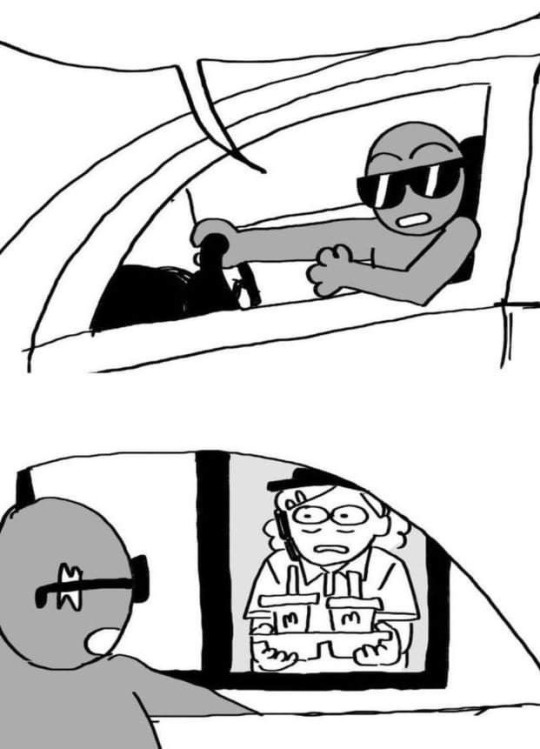
This is the most cursed prompt I’ve ever read. Instigation to murder, betrayal, deception, vore, furries…woah.
#but this is super tame compared to the rest of grimm’s fairytales#that shit is the OG dark content#every German kid goes through the traumatic experience of having grimm’s fairytales read to them as bedtime stories#and I’m not talking about the child-friendly versions‚ no no#i mean the original uncensored versions#so much murder in the most gruesome ways imaginable#cannibalism‚ torture‚ r*pe; the full package#chit chat#anons<3#bsd#fyodor.bsd#nikolai.bsd#dazai.bsd#tw cannibalism#tw violence#tw rap3#tw murder#tw vore
43 notes
·
View notes
Text
I don't have the guts to watch the Frieren anime. I already cry on the regular when I read the manga every three months. It literally breaks me when I think about the premise alone. You're telling me to witness a near-immortal self actualize affection and intimacy for people she already outlived AND is in the process of outliving???????
Pretty sure I'll end up eating my whole fist if I watch it animated and voiced.
#like I listened to the Yaosobi OP and?????????????#THE NAILED IT SO WELL??????#the symbolism and fairytale motifs in that opening DISAPPEARING when frieren is recalling the memories she had with himmel over the tales#the way his statues are so vague and formless compared to the BRIGHT BRIGHT BRIGHT lights behind him in her memories#THE FUCKING RING APPEARS MULTIPLE TIMES WHEN IT ONLY APPEARS ONCE IN THE MANGA#I just KNOW they did some witchcraft with the anime to make it way more painful and gutwrenching#kjdaslafnsd#sousou no frieren#frieren: beyond journey's end#frieren anime
37 notes
·
View notes
Text
🐇🕳️🚨‼️
The irony of this Sunday morning rabbit hole is the fact that it grew from pure serendipity, as I pondered who Michael Cera was married to, after noticing a wedding ring on his finger in an Instagram reel about his role as “Allan” in Barbie (2023), and found this article:
Michael Cera and his lovely wife Nadine have proven that it IS absolutely 97.6% possible to keep your private life private, if you truly did want to keep your private life private (and didn’t tell Amy Schumer.)
It was at the bottom of this article that I found this fascinating juxtaposition of headlines.
SPOT THE DIFFERENCE

Just as there’s a thin line between love and hate, there might be an equally thin line between girlfriend and stalker.
COMPARE & CONTRAST:


Loud & Proud
VS.
Whatever this is casual and “pRiVAtE”
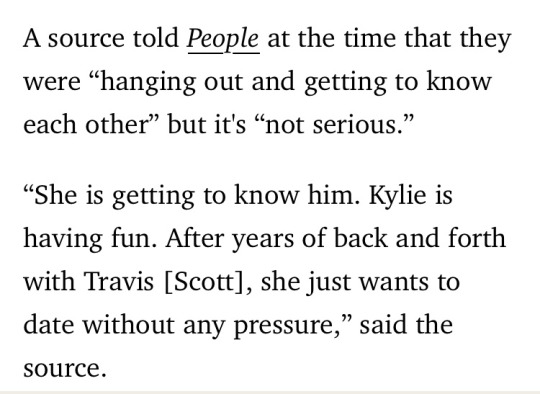
The “insider” source’s solitary, continuously-retreaded statement still gets traction months after making its first appearance in the trash tabloid press, despite many opportunities for an update in the numerous new articles magically appearing every few weeks that no one asked for because no one really believes this specific fairy tale.

BONUS, ICYMI:

X

X
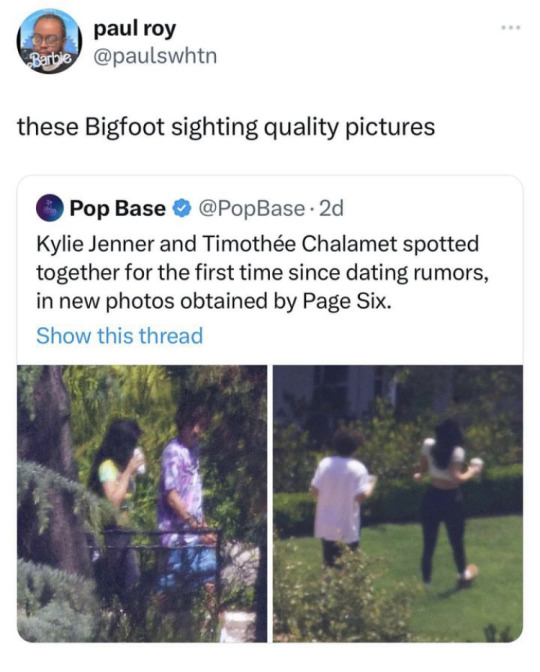
X
#sunday morning rabbit hole#rabbit hole#range rover rodeo#bigfoot backyard bbq#tarmac tango#car and driver#fairytale#compare and contrast#true romance#facts vs lies#tom and zendaya#kyliegate#enough already#put up or shut up#public private romance#cryptozoological film footage#so private#insider source#no ones buying it kris#serendipity#michael cera#Allan#thanks barbie#privacy#PRomance#we’ve seen better footage of bigfoot#the universe has a sense of irony#mafalda needs more popcorn#tales from the charmiesphere
38 notes
·
View notes
Text
Honestly what with him being stuck in one unaging, unchanging state with his only remaining connection to his former self being this vague notion that he must fight and protect and sacrifice with no regard for his own well-being - there really is something of The Ghost Knight in Mytho.
#princess tutu#mytho#i mean we know that already. like the dude is literally mytho's pride. he fully lets go of his one shred of existence once its returned to#once its returned to mytho#but we really dont talk about it enough#the episode unfortunately pits fakir against the knight so we get lost in that particular sauce but#they're literally reflections of eachother#or rather they are eachother?#how do i put this#i feel like. a very plausible reading of the episode and mytho;s character#is that his pride is what ties him to his role as a ''prince who loves all''#cos like. once he breaks his own heart he is a shell. a ghost of his former self and all his accomplishments#hes cannot love all because he cannot love anyone#so the only thing that still makes him Him#is what he did out of that perfect selfless fairytale love: fight and save and sacrifice#he's literally on autopilot#You know. Like a certain Someone.#some-ones.#why did the show never stop to compare and contrast fakir and mytho;s attachment to their roles actually. weren't they concieved as like.#equal and opposites?? narrative foils??? The White Prince and The Black Prince???????#there was still something to that even after fakir's development went off the rails why miss this opportunity to elaborate on mytho's chara#ran out of letters again#god#my point is what the fuck. what happened. ooooooh im so miffed now im miffed.#fate.txt
25 notes
·
View notes
Note
“ Got caught giving a fuck. Embarrassing. ” (Kid)

( will find meme prompt later bc im at work - for @a-musing-mixologist's Kid )
"You dont seem embarrassed to care about your crew," is Thea's cool response, "but dont worry, I wont tell anyone." A touch of wry humor there, even as she straightened wrinkled clothing and repinned braids that had come loose. It had been a close call, how she'd almost been thrown overboard. Kid had been in the right place, at the right time, and had plucked her out of the air before she'd gone too far and landed in the ocean.
And landing in the open sea meant drowning.
"I appreciate the save though, be a terrible fate to drown." Not too ruffled about the 'what ifs' of the situation, just relieved to be safe and firmly on her two feet again.
#☪v: seafoam dreams#☪fairytales written by rabbits [askbox]#a musing mixologist#/imaging kid catching thea outta the air like yoink#/she's so little compared to him LOL
3 notes
·
View notes
Text
Some Brothers Grimm fairytales facts (1)
So, my mother has this old copy of the Brothers Grimm fairytales published in the 70s - a selection of Grimm fairytales translated by Marthe Robert. If you do not know Marthe Robert, she is one of the famous French literary critics of the 20th century, known for her many translations of German works (she is recognized as one of the experts of Kafka in France), as well for her numerous works about the psychanalitic interpretation of literature.
And this edition also has a preface where she points out some things that are quite interesting... Now, I need to precise, I wouldn’t advise you to take everything in this preface. As I said, Marthe Robert had a psychanalysis-approach to fairytales (which was the one popularized and widespread by Bruno Bettelheim’s work). And while I, for myself, enjoy those interpretations (Bruno Bettelheim was actually how I got to first discover the depths and complexity of the fairytales), I also came to realize, by studying fairytales, that they are not the best to ACTUALLY understand fairytales. Mostly because psychanalytic readings and interpretations of fairytales are strongly intertwined with the folklorist reading of fairytales, and... as I keep pointing out, the folklorist point of view has been discovered to be quite flawed in several aspects. It doesn’t remove the beauty or poetry of these readings and interpretations, which provide a new richness and new meanings to the tales... But to be taken with a grain of salt.
However we are here talking about the Grimm fairytales, which due to being folktales in nature (though slightly edited to fit an ideology), are much more fitted for folklorist and psychanalytic readings. And as a translator of the works of Grimm, Robert brings some interestng points... So let’s see them.
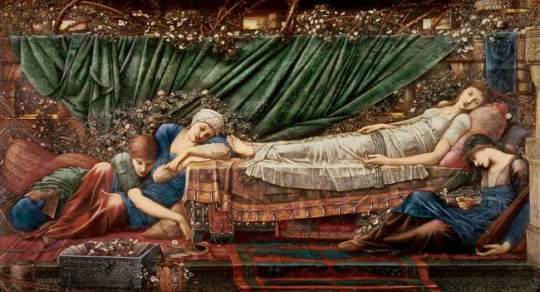
(This is the painting on the cover of the book, so I’ll add it for a bit of illustration)
1) One thing that is very true, and that we should never forget - the Grimms might be criticized any way you like, but what can’t be robbed for them, is the fact that thanks to their hard-work and dedication they managed to survive and restore an entire oral folklore that was slowly dying out and about to be lost forever. Without the Brothers, we would have never have so many tales that are classics of our culture today.
2) A good illustration of the literary VS folklorist point of view. Marthe Robert, having written this preface in the 70s, was heavily influenced by the folklorist studies, and this shows in the text. Most notably, already at the beginning, we see the presence of a HUGE misconception spread by the folklorists. This misconception is that “While Perrault made the fairytales popular among scholars and people of taste, nobody until the Brothers Grimm thought of these stories as something more than just the charming, naive and simple products of a popular imagination, only fully enjoyable by old women and children”. This is a HUGE misconception. The thing is that the whole “These stories are just humble folk-tales told by old nurses, by the fireside during evenings are peasant homes” or “These tales were written and told with a child-like mind, and are just little nonsense for your entertainment” was present in the literary texts of fairytales we had (such as Perrault’s tales)... But it was a narrative and publishing strategy. Fairytales, as a literary genre, was a whole aesthetic, and Perrault, like others, were trying to imitate the folktales they took inspiration from - so of course they were going to add elements defending the “childishness” or “simple-mindedness” of their tales. It was also an excellent way to avoid censorship (which was strong, back in the days) and to deal with the very harsh world of critics and literary feuds at the time (you don’t know how strong it was back in 17th century France, worst than Internet dramas these days). By pretending that these tales were just “simple folktales of foolish old women and naive children”, the authors could avoid a lot of things that would have raised the ire of the censorship. But these things, half-hidden, were clearly spot-on by those in the known...
Because, I can’t tell it enough, while the pre-Grimm fairytales, especially the French fairytales, Perrault and others, were PRESENTED as simple folktales, they were not at all simple folktales written hastily. They were literary works, carefully planned, with several drafts. They were stories written by adults for adults, part of games, entertainments, discussions and debates in intellectual circles. They were filled with jokes, and wordplays, and innuendos, and dark undertones, and there were layers of hidden meanings and symbolism everywhere. Because it was part of the “game” of the fairytales back then. They weren’t just about “Who can invent the wackiest tale?”. The pleasure was also to try to understand what the author hid and wrapped under the costume of a “poor, naive folktale”. The way Little Red Riding Hood was an obvious metaphor for ill-intentioned seducers, the way that Diamonds and Toads is in truth a praise of flattery and politeness (which were key elements when living at the royal court), the way that Puss in Boots was an humoristic critique of the ascension to power of some and of the system of inheritance and rewards at the time, in Louis XIV′s France...
All that being said, take the next sentence of Marthe Robert and you’ll understand what is wrong with it: “While people had fun reading them, or sometimes writing them, nobody actually wondered why they came to be, and their meaning was clear enough to be resumed in a short morality that, while making these tales useful, also justified their weirdness”. It is true that the Moralities were here as a “safety measure”, to justify the nonsense and bizareness of these tales (in late 17th century France, nonsense was considered garbage, and every literary work needed to have a reason to be and a usefulness to it, you didn’t actually just wrote something because you felt like it - if you did that, you were not perceived as a true author, or even as a writer, but just a scribbler). But the mistake here is to believe that these “Moralities” hold the entire, simplified meaning of the tales. Far, far from it, as French fairytales were purposefully designed to have a game of meaning and complex senses: the fun was all about decyphering them.
3) Marthe Rober then proceeds to describe the thought-process that led to the rise of the “folklorist reading” of fairytales, and which was the point of view that dominated ever since the Grimms’ work became popular. And this thought process is: Let’s collect folktales and stories from all around the world, from various countries and continents. Then, let’s compare them, in how similar they are. Now, we see that they have a common structure, common narratives, with elements that are sometimes described and placed in identical fashons - except for a few exceptions. But beyond them, these striking similarities and identicalities prove a continuity of themes beyond countries and cultures. How to explain this? It can only be explained by a common source, a common origin: all the tales have a common ancestor.
[Note by me: This is the folklorist point of view. But the literary point of view that is now contradicting this one, if you are ever interested, is that maybe the “story-ancestor of all the tales” is a myth that never truly existed ; maybe these similarities and continuities are due to stories feeding of each other, and blooming and spreading from each other, due to an intertextuality and cross-cultural influence rather than a so-called “common ancestor” that had “children” everywhere - and unlike the folklorist viewpoint, which casts aside the unusual and pattern-breaking variations as “exceptions to the rules” or “one time weirdness”, the literary point of view considers that, on the contrary, they should be considered with as much importance as the stories that deviate from the “main mold”.]
Marthe Robert even mentions the theory held by the Grimms themselves (though she doesn’t seem to fully adhere to it?), that the common ancestor of these stories was... Aryan stories. For them, the “aryan tribes” were the ancestors of the Hindus, the Persians, the Greek, the Romans, and the other people of Europe, and thus the common ancestor of all those folktales and fairytales were none other than the “ancient Aryan tales”... [Did I mention the Nazis had a huge liking of the Brothers Grimm and reinterpreted their books and works in perverse ways? Well, if I hadn’t before, now you’re warned.]
4) Moving on, Marthe Rober then explains that, once the origin of the tales are explained in this way, all that is left is to interpret these tales and get their meaning. And she offers us something she calls the “natural reading” of these tales. A type of interpretation that was REALLY popular for a time, that is quite poetic in itself I’ll admit, but that also gets really wacky and wonky sometimes, when pushed to its extreme limits. This “natural reading” is simply the interpretation of fairytales as descriptions and allegories of natural events and phenomenon. The first example she gives, and which is the one that is invoked a lot even today, and perhaps the most “solid” of them all, is Sleeping Beauty: the asleep princess represents spring or summer, her hundred-years sleep is winter, and the young prince that wakes her up must be the sun “waking up” nature in spring (Marthe Robert notes that this interpretation still has leftovers in the tale of Perrault, where the princess two children are “Day” and “Dawn”). Okay, so far so good... But then Robert adds two more “natural readings” which, for me, are completely off, and just stretching the concept heavily. There is the “natural reading” of Cinderella, where the titular heroine is the “hidden light”, some sort of solar figure whose light and shine is clouded or obscured by the ashes covering her - and who gets to only shine bright again by marrying her prince. Quite a stretch of a reading, but at least I get where it’s coming from. And then... Then there’s the worst offender. The natural reading of “Donkey Skin/A Hundred-Furs”. The reading where “the girl fleeing her father’s incestuous desires by hidng in a beast skin” is actually “dawn, hunted by the sun, of which she fears the burn”... Poetic, but really wacky. And not solid enough to hold what Marthe Robert adds - that “with this reading, all these tales come to have roughly the same meaning”, aka a description of a battle to restore light.
5) Hopefully the “natural reading” paragraph was purposefully presented in a not-so-good light by Marthe Robert, since she immediately adds that this subject has been debated, discussed and debunked for a long time now - and is just a “historical fact”. She notably invokes how these theories, be it the “aryan theory” of the Grimm or the “natural readings”, only work for European folktales, and completely break down when it comes to fairytales from other continents. Comparing them to the European tales completely debunks the idea that all these stories have a supposedly common ancestor whose influence spans worldwide. (That’s something I enjoy with psychoanalysis interpretations of fairytales, while they completely miss the literary aspect, they are also detached enough from the folklorist one to see its most obvious flaws. Of course, then they go sometimes into far-fetched places themselves, but nothing is perfect). In Robert’s own words, the theory of the brothers Grimm was “far too narrow and yet far too large”, but it had the praise to actually make people realize and understand that the fairytales were actually just as important and meaningful as the myths of old.
6) Marthe Robert then goes on to describe how, despite social and religious changes, the continuing fairytales keep carrying the same meanings behind the allegories, and the same “human experience” hidden by its images - she notably points out that, despite being developed in Christian cultures, fairytales still hold on dearly to many elements of paganism, through depictions of various rites, practices and customs - for her, these are more than just memories carried on by the tales, but rather instructions making the fairytales didactic, turning them into manuals and teachers.
7) So, while she rejects the Grimm-brought idea that the “true meaning” of all fairytales is a mythological description of the cycles of nature and weather or astral phenomenon, she, as a psychanalyst-influenced literary critic, still believes in a “general meaning” behind fairytales, a “recurring sense”. And for her, the fairytales are all about a passage, a transition. A needed passages, a difficult transition, with a thousand obstacles on the way, preceeded by seemingly unbeatable trials, but that always ends up happily concluded. “Under all of the most incomprehensible fantasies, a real fact keeps appearing: the necessity for an individual to go from one state to another, to transition from one age to another, and to shape themselves through painful metamorphosis, that will only end when they reach a true maturity”. For her, in the “archaic” culture that the fairytale preserved, the rite of age-passage, be it from children to teenager, or from a teen to an adult, is a perilous transition, a trial that can only be won by an initiation beforehand. So this is why the child or the young man of the fairytale, finds suddely himself lost in a deep forest with no way out, and there meets a wise person, often older than him, whose advice will help him find his way back. [Note: You can see here that she is very influenced by the Märchen, of which she is writing a preface of and that she just translated. But this is a common thing with psychanalist readings of fairytales, they usually focused exclusively on the Grimms and Perrault, with a tiny bit of Basile on the aside, but that’s it.]
8) Another typical “folkorist slander” of French fairytales: “If the French tradition weakened the initiatic aspect of the fairytale to replace it by a barely-disguised eroticism and a conformist morality, the German fairytale, less “civilized”, keeps all of its strength”. Urg. “A barely-disguised eroticism”, I guess when you want to denounce the dangers the sexual abusers, you need to add some sexual elements lady! And have you seen Basile’s story? They are sex comedies, and scatological too, true medieval tales of Reynard! As for the “conformist moralities”, I talked about it before - the Moralities of Perrault (and she is clearly referring Perrault because he was the only one to put Moralities in all of his fairytales) only looked “conformist”, but the minute you pay attention to them, you realize they are in truth subversive moralities.
9) Now, while she uses this element to exemplify her slander above, this part is deeply interesting, because she describes there one of the major differences between French fairytales and German fairytales, hightlighted by the comparison of duets (the two Cinderellas, the two Sleeping Beauty, the two Donkey Skins): the treatment of the “fairy” character. The French fairytale fairy, for Robert, is this “character with a shining dress, a star on her forehead and a magic wand in her hand, who arrives exactly when she is needed to solve the love problems of young people”. (This is a bit of a caricature, but that’s also kind of true...). But in the German fairytales? No fairies. They are rather replaced by... “the wise women”.
An old woman, that doesn’t get any description, and who is very ambiguous - when she shows up, the reader can’t tell if she is a protective spirit, or an evil witch. This frightening hag does not have the “shine” of the fairies - she is not admired, she is not beloved. Even whe she is here to bring happiness, she is gaunt and dry. She is the very opposite of the “radiant fairy who, in front of orphans, fuses herself with the figure of the dead mother”. The “old woman” here appears briefly, when all hope is lost, and she is the godmother of no one. If she sometimes assists the birth of those she helps, she never appears for their wedding, and as soon as her task is done she disappears. And in German fairytales, this character is called the “wise-women”. A name with two meanings. She is of course a literal “wise woman”, a woman full of wisdom, but she is also a “midwife” - because “midwives” were traditionally called “wise women”, since it was believed that one needed to know the “rules of wisdom”, aka the strict obediance to the rites presiding over birth, to be able to deliver a baby safely. This is why the “old women” of the Grimms are guardians of rites and taditions, hence why they are feared but respected - before being witches or enchantresses, they were the Greek Moirai and the Germanic Norns, these embodiments of Fate presiding over the destiny of humans (which is why the märchen old woman is often seen weaving). Between the fairy and the witch, the “wise woman” can be good or bad depending on the situations, while neither fully eing one or the other - she only responds to the customs and rites of the great events of life, and is here to highlight their meaning.
To place an example behind her development, Marthe Robert takes the Grimm version of Sleeping Beauty, “Briar-Rose”. In this story, there are thirteen wise-women in the kingdom that the king knows of, but he cannot actually invite them all due to him only having twelve golden plates - and apparently wise-women can only eat in this kind of plates. So the thirteenth wise-woman is purposefully “forgotten”, and this omission is a breaching of the rules of the rituals. This fault leads to the imposition of a serious ban over the baby girl: the prohibition to ever use a spindle. Which means, the inability to live a normal and regular young girl’s life. This prohibition leads to another omission, since all the spindles are destroyed except for one - one that stays in the hands of an old weaver-woman (in which one could reconize the thirteenth wise-woman, according to Robert). And from this second omission comes the last trial: an attenuated form of death, the Hundred-Years Sleep, which will only end with a nuptial rite. “Wrongly birthed”, since her birth is tied to a flawed act, the Beauty cannot develop herself without fearing death at every instant - her transition into teenagehood can only be done through a deep lethargy, and it is with great lateness that she finally “wakes up” through love. [Note: this is a REAL psychanalytic-reading. Having read Bettelheim, thus is pure psychanalysis-interpretation.]
A midwife, a scholar, a wizardess, the “wise-woman” is, for Marthe Robert, a better ancestor of her “ancestor from Antiquity”, than the romantic fairy of French fairytales: her role is to transmit to the individuals who need it the most (aka the children and teenagers) the knowledge of religious and social practices through which man becomes part of the “order of things”, through which man truly “comes into the world” and finds there his “place”. Once we understand that this is the function of the fairytale, it becomes very clear (again, all of this is Marthe Robert’s point of view) why the fairytale is such a paradoxical genre. It becomes clear for example why these stories supposedly for children keep treating a theme that is far away from being childish in nature: the erotic quest of the beloved, through a thousand painful trials. In truth, for Robert, this contradiction only exists for our modern eyes, according to the criteria of a moral pedagogy - but it disappears once we understand that the “wise-woman” character is the one causing the initiation, the advisor of the protagonist, and the keeper of rites.
And this is also why fairytales are, at the same time, so innocents... and so cruel.
[More in my following post!]
#fairytales#fairy tales#grimm fairytales#brothers grimm#french fairytales#perrault fairytales#charles perrault#fairy#fairytale archetypes#the wise woman#witches#comparative fairytales#folklorist vs literary#marthe robert
20 notes
·
View notes
Text
watched john wolfe play brothers: a tale of two sons and realizing just how well done bramble: the mountain king was in comparison. like the latter would not exist without the former, and brothers is definitely a respectable game and by no means bad, but bramble is just doing everything it does so much better. like down to the visuals and sound design.
#.txt#i think that bramble does the whole 'going from a wholesome fairytale into something super dark' thing a lot better#like the transition between the more wholesome stuff and dark stuff is smooth#in brothers it feels a lot more jarring. like john described it as a tonal whiplash n i think that makes sense#and i dont think brothers ever ends up being as dark as it couldve been#like theres definitely dark stuff but its not enough to make the transition from wholesome fairytale effective#like when bramble gets dark it gets Dark dark u know#brothers never ends up feeling as impactful n sad as the devs clearly wanted it to#its very 'dont you feel sad rn? isnt it sad how this character died? isnt it awful?' u know#and yea the sound n visuals in brothers is fine. they do their job well enough#but again comparing it to bramble u start to realize just how cool n interesting they were in that game
4 notes
·
View notes
Text
i want to write SO MUCH ESSAY. while knowing SO LITTLE !!!
#the wuthering heights/whalitc comparative that will never see the light of day because i dont know enough economy...#the relationship between fairytales and gothic novels that i will never be able to explore because i dont know enough history....
16 notes
·
View notes
Text
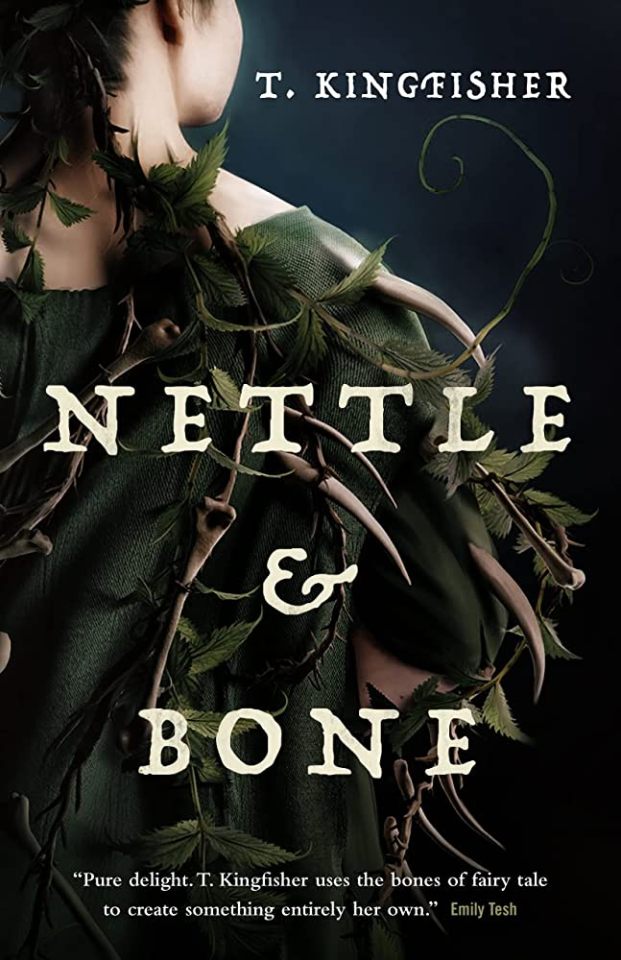
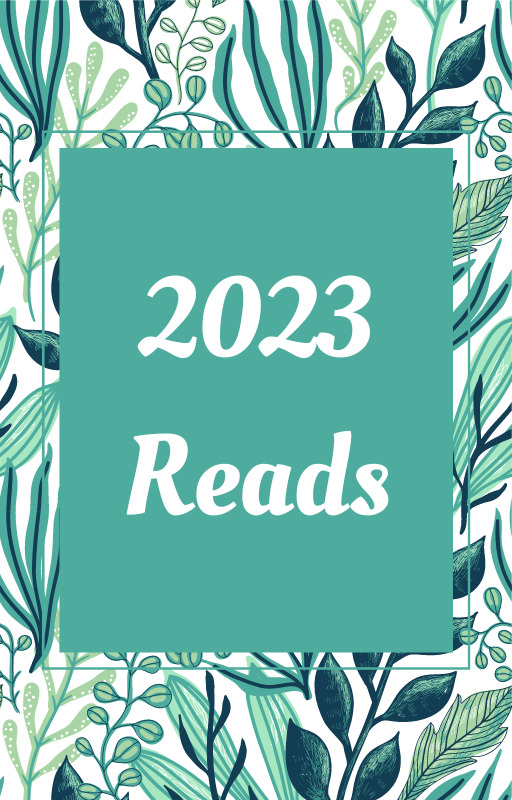
Adult fantasy novel
Dark fairytale about a princess-turned-nun/midwife who sets out on a quest to kill her sister's abusive husband with the help of a necromancer, a disgraced knight, a fairy godmother, an undead dog made of bones, and a demonic chicken
Feminist rage and sinister magic alongside a motley crew of characters and an understated romance
Main character of color
#okay a gripe: WHY is the lady on this cover white when marra is described as being brown-skinned!!#okay but the actual book is quite good#deeply angry but also at times funny and inventive#loved the cool old women with magic#(they are lesbians do not @ me)#took a bit for me to get into it until the nonlinear beginning smoothed out#i wish there had been a tiny bit more of the complicated sisterly relationship#very creepy magic puppets ahhhhhh#but yeah everything i've read by t kingfisher has been great and this is no exception#i have heard this compared to the d20 campaign neverafter so perhaps people who enjoy that dark fairytale quest vibe#would enjoy this#nettle and bone#t kingfisher#books#lulu speaks#lulu reads nettle and bone#2023 reads
11 notes
·
View notes
Note
Randomly wanted to remind you that i still actively mourn the manor from fairytale ending, and I'm still crushed that Elena will never see it again and three years of her life is just dust now 🫠
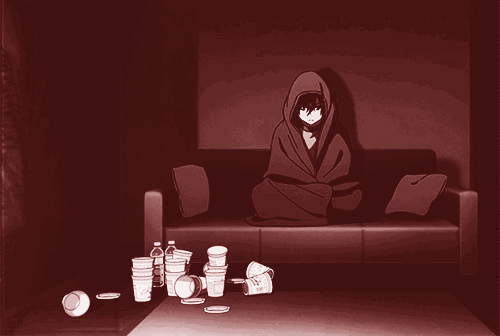
Dead inside every time I remember I burned it to the ground.
#ninas reverie#asks#fairytale ending#it was a character in its own right huh#the chateau just doesn’t compare
15 notes
·
View notes